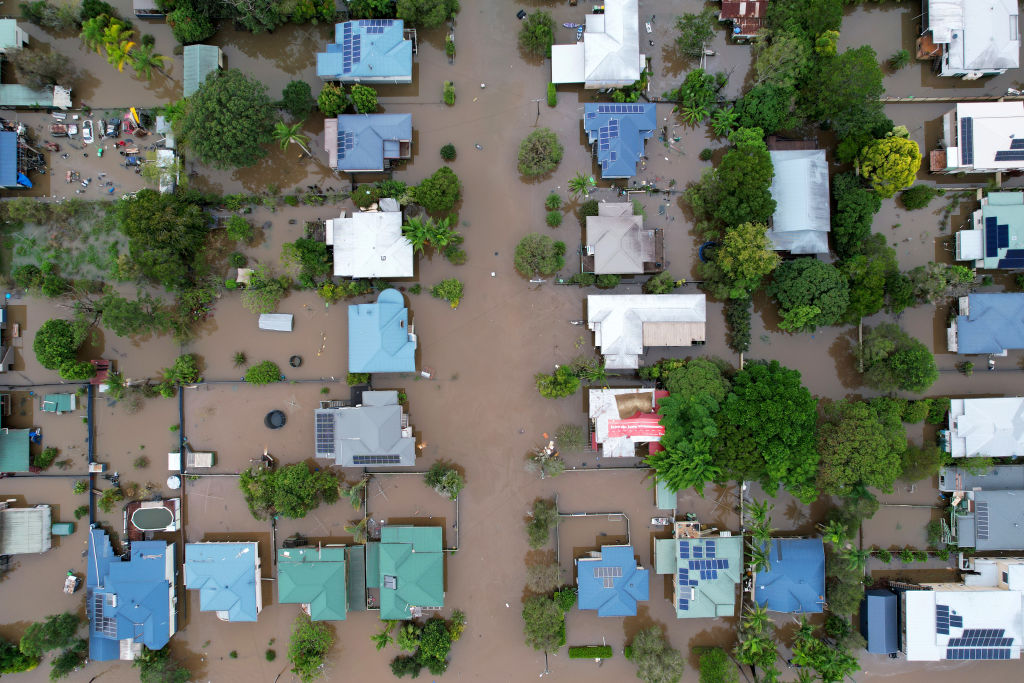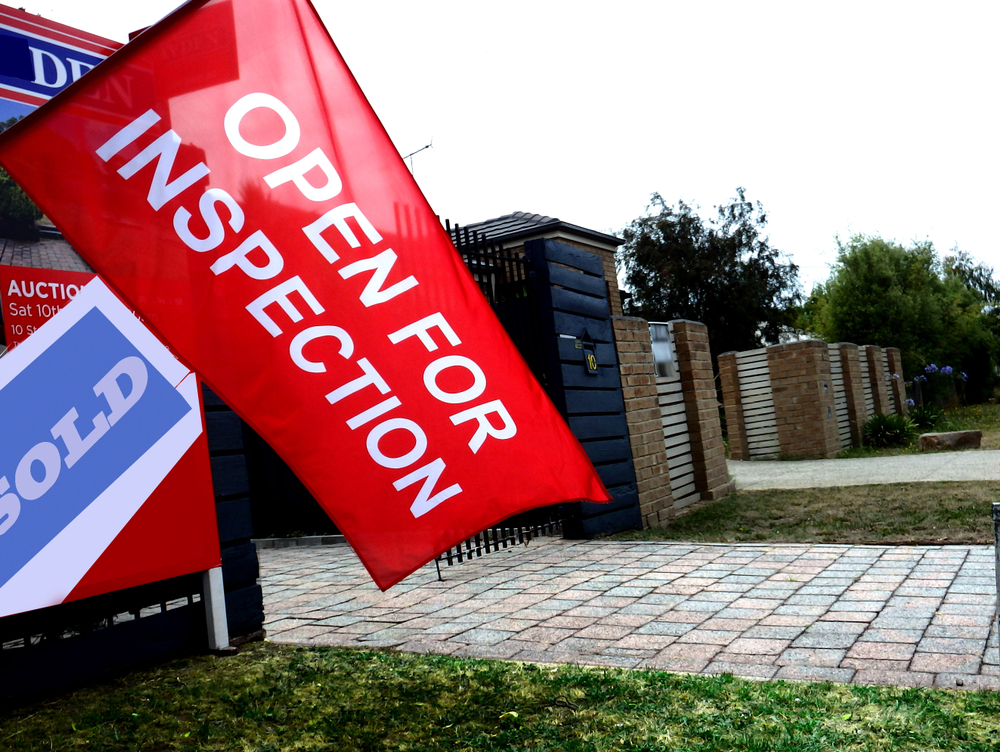The top 10 Australian locations at highest flood and bushfire risk
A new report finds higher flood and bushfire property premiums are leaving more homeowners and investors struggling to insure their assets
More extreme weather events are affecting property values and home insurance costs, with a new report highlighting the impact of bushfire, riverine flooding and coastal erosion risk on homes and the need for buyers to assess disaster risk in their purchasing processes.
The 2024 Perils Report from Domain Research has found there is a direct relationship between the value of a home and its susceptibility to natural disasters. It revealed that 5.6 million Australian homes are at risk of bushfire — almost half of the entire residential housing stock. More than 32,000 homes, or 0.3 percent of stock, have high bushfire risk ratings. The researchers estimate that a home’s value decreases by 2 percent with every increase in its bushfire rating.
The report also found that 953,000 homes, or 8.1 percent of housing stock, face flood risk. Almost 141,000 homes have a high risk, and for every percentage point increase in the risk of a 50-centimetre flood, a property’s value drops by 0.8 percent. About 160,000 homes are within 150 metres of the coastline, and about one in 10 are at risk of erosion. However, the report finds there is no significant price impact given buyers place a high priority on waterside locations and views.
“This report is almost like a snapshot in time, looking at what is that landscape currently today, but we know that these natural disasters are escalating because of climate change,” said Domain chief of research and economics, Dr Nicola Powell. “The impacts in the future could [be] greater, impacting more homes and communities.”
Domain Research said evaluating a property’s risk is increasingly important for buyers. Home purchasers can access information from local councils and state governments, and some information may be included in the contract of sale. Buyers can also pay for a risk report to be done.
A recent report by the National Housing Supply and Affordability Council described climate change as an ‘emerging trend’ affecting values and insurance costs. “The price differential between flood-affected and non-flood affected homes has been estimated to be up to 35 percent a year after a flooding event,” the report said. “Furthermore, the RBA estimates around 7.5 percent of properties are in areas that could experience price falls of at least 5 percent due to climate change by 2050.”
The report said more than one million households are struggling to afford home insurance today, and more homes are uninsured as a result. The Insurance Council of Australia (ICA) says premiums are rising due to the impact of more severe natural disasters and a significant increase in construction costs that have gone well above the rate of inflation, making repairs more expensive.
The ICA said four declared insurance events in 2022 alone resulted in 302,000 claims costing $7.28 billion in insured losses. Six billion was from a single event – the Northern NSW and South-East Queensland floods – which was the second costliest insured event in the world that year and the costliest insured event in Australia’s history.
ICA CEO Andrew Hall says governments at all levels need to invest in more protection measures to mitigate the impact of extreme weather, thereby helping to keep insurance premiums lower.
“Governments must also amend land use planning legislation to include a mandatory requirement for planning approvals to consider property and community resilience to extreme weather, and improve building codes so future homes are made more resilient,” Mr Hall said.
Top 10 areas with the highest chance of a 50cm flood per year
1 Ballina NSW 3.9 percent
2 Tweed Heads South NSW 3.7 percent
3 Grafton NSW 2.7 percent
4 Coonamble NSW 2.3 percent
5 Tweed Heads NSW 2.2 percent
6 York-Beverley WA 1.9 percent
7 Maclean-Yamba-Iluka NSW 1.9 percent
8 Lismore NSW 1.8 percent
9 Tingalpa QLD 1.7 percent
10 Far South West QLD 1.6 percent
Source: Domain Research
Top 10 areas with the highest bushfire risk (out of 10) per year
1 Upper Yarra Valley VIC 7.7
2 Ashendon-Lesley WA 5.5
3 Mount Dandenong-Olinda VIC 5.4
4 Ettrema-Sassafras-Budawang NSW 4.6
5 Mount Wellington TAS 4.3
6 Glen Forrest-Darlington WA 4.0
7 Bilpin-Colo-St Albans NSW 3.9
8 Calga-Kulnura NSW 3.9
9 Deua-Wadbilliga NSW 3.9
10 Belgrave-Selby VIC 3.8
Source: Domain Research
A divide has opened in the tech job market between those with artificial-intelligence skills and everyone else.
A 30-metre masterpiece unveiled in Monaco brings Lamborghini’s supercar drama to the high seas, powered by 7,600 horsepower and unmistakable Italian design.
Buyer demand, seller confidence and the First Home Guarantee Scheme are setting up a frantic spring, with activity likely to run through Christmas.
The spring property market is shaping up as the most active in recent memory, according to property experts Two Red Shoes.
Mortgage brokers Rebecca Jarrett-Dalton and Brett Sutton point to a potent mix of pent-up buyer demand, robust seller confidence and the First Home Guarantee Scheme as catalysts for a sustained run.
“We’re seeing an unprecedented level of activity, with high auction numbers already a clear indicator of the market’s trajectory,” said Sutton. “Last week, Sydney saw its second-highest number of auctions for the year. This kind of volume, even before the new First Home Guarantee Scheme (FHGS) changes take effect, signals a powerful market run.”
Rebecca Jarrett-Dalton added a note of caution. “While inquiries are at an all-time high, the big question is whether we will have enough stock to meet this demand. The market is incredibly hot, and this could lead to a highly competitive environment for buyers, with many homes selling for hundreds of thousands above their reserve.”
“With listings not keeping pace with buyer demand, buyers are needing to compromise faster and bid harder.”
Two Red Shoes identifies several spring trends. The First Home Guarantee Scheme is expected to unlock a wave of first-time buyers by enabling eligible purchasers to enter with deposits as low as 5 per cent. The firm notes this supports entry and reduces rent leakage, but it is a demand-side fix that risks pushing prices higher around the relevant caps.
Buyer behaviour is shifting toward flexibility. With competition intense, purchasers are prioritising what they can afford over ideal suburb or land size. Two Red Shoes expects the common first-home target price to rise to between $1 and $1.2 million over the next six months.
Affordable corridors are drawing attention. The team highlights Hawkesbury, Claremont Meadows and growth areas such as Austral, with Glenbrook in the Lower Blue Mountains posting standout results. Preliminary Sydney auction clearance rates are holding above 70 per cent despite increased listings, underscoring the depth of demand.
The heat is not without friction. Reports of gazumping have risen, including instances where contract statements were withheld while agents continued to receive offers, reflecting the pressure on buyers in fast-moving campaigns.
Rates are steady, yet some banks are quietly trimming variable and fixed products. Many borrowers are maintaining higher repayments to accelerate principal reduction. “We’re also seeing a strong trend in rent-vesting, where owner-occupiers are investing in a property with the eventual goal of moving into it,” said Jarrett-Dalton.
“This is a smart strategy for safeguarding one’s future in this competitive market, where all signs point to an exceptionally busy and action-packed season.”
Two Red Shoes expects momentum to carry through the holiday period and into the new year, with competition remaining elevated while stock lags demand.
A luxury lifestyle might cost more than it used to, but how does it compare with cities around the world?
By improving sluggish performance or replacing a broken screen, you can make your old iPhone feel new agai




















